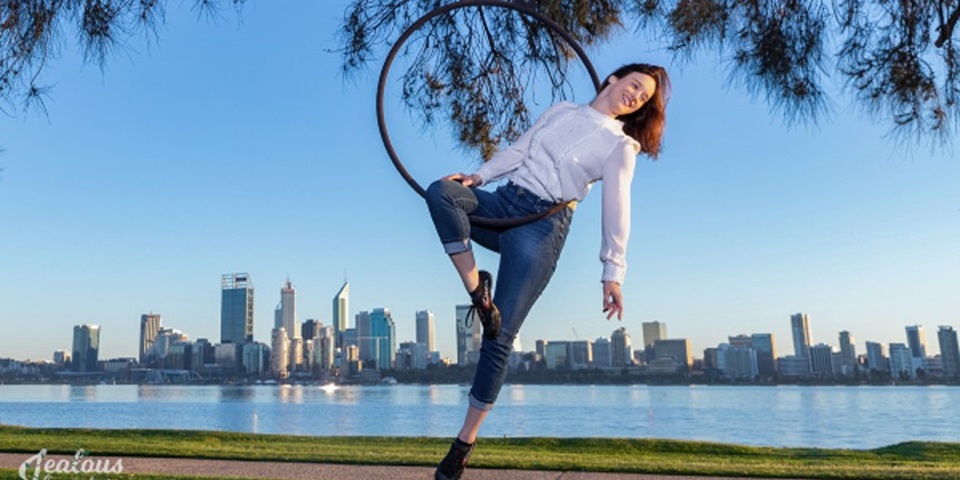News
Psychology under the Big Top

Murdoch Sports Psychology Lecturer and circus artist, Dr Fleur van Rens, is empowering circus performers across the globe.
In her new book, 'Circus Psychology: An applied guide to thriving under the big top', Dr van Rens provides an evidence-based guide to nurturing the mental health of circus performers while enabling them to perform at the peak of their capacities.
"Until a decade ago, the mental and physical health of circus artists was not researched," she explained.
"Only recently the scientific community started to explore the impact of circus on artists’ health, as well as the benefits of circus for recreational participants."
“For the safety of circus artists, it is important that they train and perform in an environment that supports their physical and psychological wellbeing." Dr Fleur van Rens
“Circus artists may perform a show three times per day, five days per week, and are required to perform physically demanding skills with artistic expression.
“The physical and mental demands of this are very different compared to, for example, a gymnast who has one competition per month during which they perform a two-minute routine at the peak of their capacities."
However Dr van Rens said there are also many crossovers between traditional sports psychology and the circus variety, a prime example being performance anxiety.
In fact many of the concepts covered in her book, such as psychological safety, balancing stress and recovery, and dealing with performance pressure, are relevant to other domains including sports, performing arts, and emergency services.
And like other disciplines, the circus industry has struggled in recent times with COVID-19 preventing live performances.
“As a result, artists and other cast and crew went through a stressful time in which they lost their livelihoods but still needed to train their skills if they wanted to be able to perform once live events started to pick up again,” Dr van Rens said.
Dr van Rens said in the circus, artists are not trained to be like anybody else, instead, they are asked to shine as themselves, to show their unique skills, and share their story.
“This makes the circus a mesmerising place where passionate people perform sometimes dangerous skills at the limits of physical strength and flexibility, in front of large live audiences,” she said.
“And at a recreational level, circus is for everybody.
“The things that make a person different are the things that are celebrated under the big top." Dr Fleur van Rens
According to Dr van Rens, Circus WA in Fremantle is a great example of a circus that promotes diversity and inclusion under the big top, particularly through its Aboriginal Youth Circus program and All-Abilities program for children with a disability.
She said writing the book was a great way to combine her passions of circus and psychology.
“It’s been a wonderful opportunity to be able to use my expertise to help the circus community that I am so involved in.”
Photo found on https://circuspsychology.com/
For research news delivered to your inbox, sign up to our monthly newsletter.
Interested in studying Sports and Exercise Science? Start your university journey today.